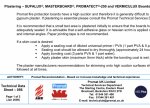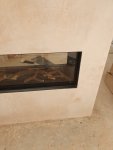Good evening all
Can anyone assist with some advice please? I have a fireplace built out of metal frame with supalux board. My plasterer has had a go at plastering onto it (following the guidelines as its high suction) today and it appears like i have a huge number of hairline cracks. Its hard to see actual cracks for the most part so maybe its just how the plaster is drying (but knowing my luck this isnt the case).
I have attached some photos.
The whole thing was pva'd 24hours before the job and then pva'd again before the actual work.
The plasterer is good, has done a fine job on every other wall in the house so i suspect its due to the board (not him) but im wondering what my next steps should be.
Any thoughts? ;-)

Can anyone assist with some advice please? I have a fireplace built out of metal frame with supalux board. My plasterer has had a go at plastering onto it (following the guidelines as its high suction) today and it appears like i have a huge number of hairline cracks. Its hard to see actual cracks for the most part so maybe its just how the plaster is drying (but knowing my luck this isnt the case).
I have attached some photos.
The whole thing was pva'd 24hours before the job and then pva'd again before the actual work.
The plasterer is good, has done a fine job on every other wall in the house so i suspect its due to the board (not him) but im wondering what my next steps should be.
Any thoughts? ;-)


